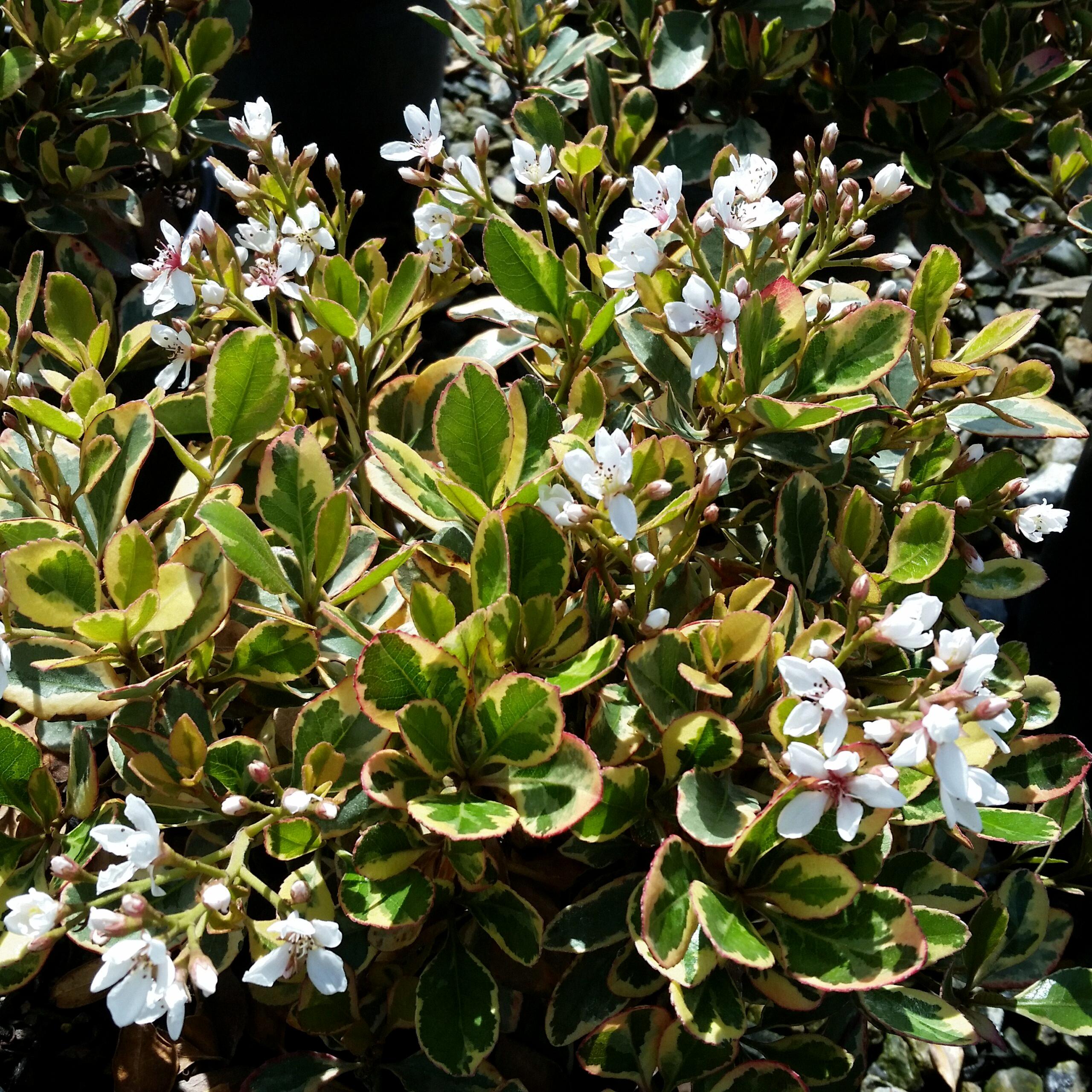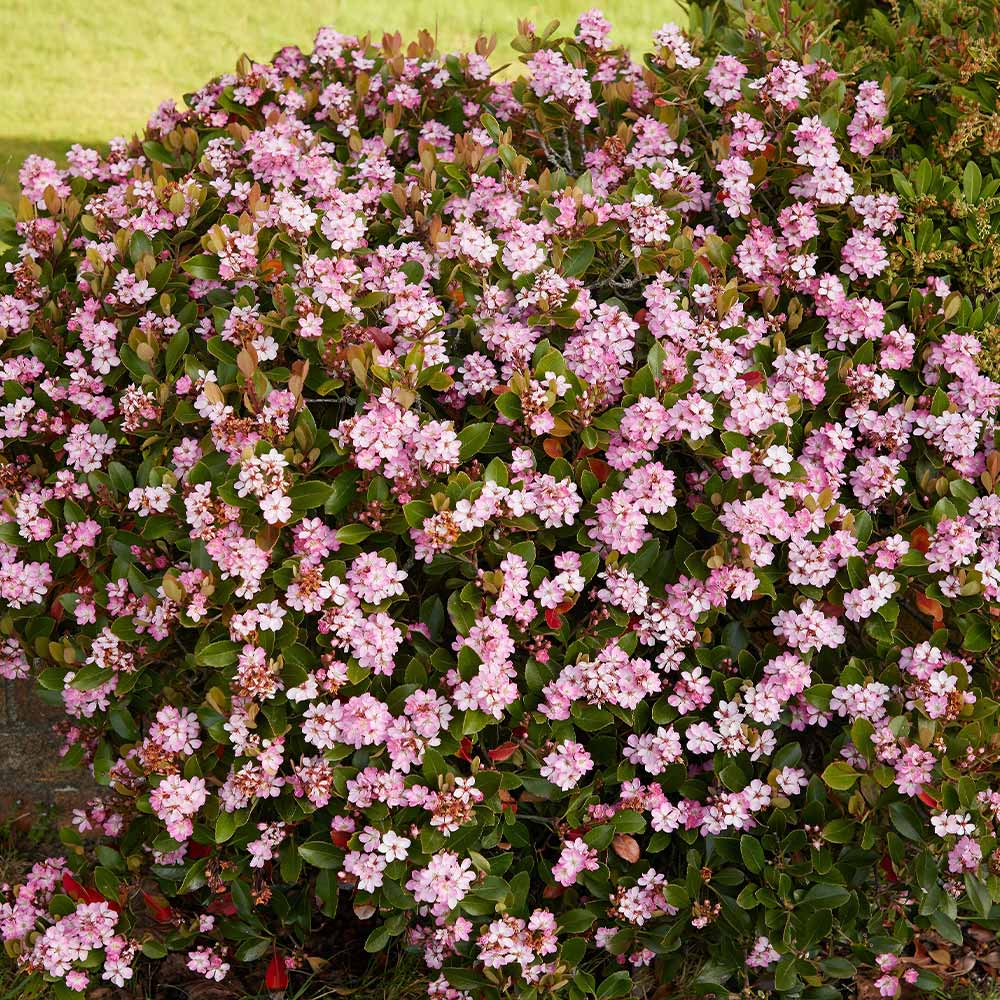Indian Hawthorn is a popular shrub native to southern China and Japan. It is known for its beautiful foliage, colorful flowers, and hardiness. However, like many other plants, Indian Hawthorn is susceptible to freeze damage.
Freeze damage occurs when the temperature drops below the tolerable level for the plant. Indian Hawthorn is winter hardy from hardiness zones 8 to 10. It can tolerate light freezes for short periods of time, but long and hard freezes can cause significant damage.
If your Indian Hawthorn has been damaged by a freeze, the first thing you should do is assess the damage. Look for brown or black leaves, stems or branches. If you see any of these signs, it is liely that the plant has suffered significant damage.
The next step is to wait and be patient. Do not go straight for the pruners and cut everything back. Indian Hawthorn is capable of producing new growth on bare stems, so it is important to give the plant some time to recover. If the bark is still alive, the hawthorns will grow back leaves.
If you need to prune your Indian Hawthorn after a freeze, it is important to do so carefully. Pruning will stimulate growth and the plant will fill in quickly, but removing too much of the plant can cause further damage. It is best to remove only the damaged or dead parts of the plant.
In addition to pruning, it is important to take steps to protect your Indian Hawthorn from future freezes. Mulching around the base of the plant can help to insulate the roots and protect them from the cold. Covering the plant with a frost cloth can also help to protect it from freezing temperatures.
Freeze damage can be a significant problem for Indian Hawthorn. If your plant has suffered damage, it is important to assess the damage, be patient, and take steps to protect the plant from future freezes. With proper care and attention, your Indian Hawthorn can recover from freeze damage and continue to thrive in your garden.
The Effect of a Hard Freeze on Indian Hawthorn
Indian hawthorn is a popular ornamental shrub known for its beautiful blooms and evergreen foliage. However, like all plants, Indian hawthorn is not immune to the effects of harsh weather conditions, including hard freezes.
A hard freeze occurs when temperatures drop below 25°F for an extended period, causing significant damage to tender plant tissues. The Indian hawthorn’s leaves, stems, and flowers can all be affected by a hard freeze, resulting in wilting, browning, and even death.
But the question remains, can Indian hawthorn recover from a hard freeze? The answer is yes, it can. However, the extent of the damage and the plant’s ability to recover will depend on several factors, including the severity of the freeze and the overall health of the plant.
Here are some things to keep in mind if you are wondering whether your Indian hawthorn will recover from a hard freeze:
– Check for signs of life: After a hard freeze, it’s essential to assess the plant’s condition carefully. Check for any signs of life, such as green stems or buds. If the plant’s stem is still alive, it will continue to grow, and new leaves will emerge in the spring.
– Prune dead or damaged branches: If your Indian hawthorn has suffered severe damage from the freeze, you may need to prune away dead or damaged branches. This will help redirect the plant’s energy to its healthy parts and encourage new growth.
– Water and fertilize: To help your Indian hawthorn recover from a hard freeze, make sure it gets enough water and nutrients. Water the plant deeply and regularly, and apply a balanced fertilizer to promote healthy growth.
– Be patient: it’s important to be patient when waiting for your Indian hawthorn to recover from a hard freeze. It may take several weeks or even months for the plant to bounce back fully, but with proper care and attention, it should recover and thrive once again.
Indian hawthorn can recover from a hard freeze, but it will depend on the severity of the damage and the plant’s overall health. By checking for signs of life, pruning dead or damaged branches, watering and fertilizing, and being patient, you can help your Indian hawthorn recover and thrive.

Source: midvalleytrees.com
Can Indian Hawthorn Be Revived?
Indian hawthorn is a popular ornamental shrub that produces attractive pink, red or white flowers in the spring and early summer. If you have an Indian hawthorn that has been pinched back for a number of years and you remove the dense outer growth around the outer edge, the plant may look sparse. However, the good news is that Indian hawthorn is capable of producing new growth on bare stems, so the plant will grow back.
When you prune an Indian hawthorn, it will stimulate growth, and the plant will fill in quickly. Indian hawthorn is a hardy plant that can withstand pruning, so you don’t need to worry about damaging it. In fact, regular pruning can help keep the plant healthy and encourage new growth.
Here are some tips for pruning Indian hawthorn:
1. Prune Indian hawthorn in the late winter or early spring, before new growth begins.
2. Use sharp, clean pruning shears to make clean cuts.
3. Remove any dead, damaged or diseased branches.
4. Cut back any long, leggy stems to encourage bushier growth.
5. Remove any branches that are crossing or rubbing against each other.
6. Cut back the outer growth around the edge of the plant to promote new growth.
7. Don’t be afraid to prune Indian hawthorn heavily if it has become overgrown or misshapen.
Indian hawthorn will grow back after pruning, and the plant is capable of producing new growth on bare stems. Regular pruning can help keep the plant healthy and encourage new growth, so don’t hesitate to prune your Indian hawthorn if it nees it.
Can Plants Recover From Freezing Temperatures?
Plants can recover from a freeze, but it depends on the severity and duration of the freeze. If the freeze is light and short-lived, most plants can usually recover. However, if the freeze is hard and long-lasting, there is no guarantee that plants will survive.
When a freeze occurs, it’s important to be patient and avoid the urge to immediately prune everything back. Allow the plant to recover naturally, as pruning too soon can cause further damage and stress to the plant.
To help plants recover from a freeze, it’s important to provie them with proper care and attention. This includes watering the plants properly, providing them with adequate sunlight, and ensuring that they receive proper nutrients. In addition, covering plants with blankets or other protective coverings can help to insulate them from the cold and prevent further damage.
If a plant does not recover from a freeze, it may need to be replaced. However, it’s important to wait and see if the plant will bounce back before making any decisions. With the right care and attention, many plants can recover from a freeze and continue to thrive.
Winter Hardiness of Indian Hawthorn
Indian Hawthorn, scientifically known as Rhaphiolepis indica, is a popular landscaping shrub that is commonly used in gardens and landscapes. The plant is indigenous to southern China, Japan, and Taiwan but has adapted well to many other regions.
One of the most common questions asked by gardeners and landscape enthusiasts is whether Indian Hawthorn is winter hardy. The answer to this question is somewhat complicated and depends on several factors.
Firstly, Indian Hawthorn is winter hardy from hardiness zones 8 to 10. These zones typically experience mild winters with minimum temperatures ranging from 10 to 40 degrees Fahrenheit (-12 to 4 degrees Celsius). Therefore, if you live in thse zones, you can plant Indian Hawthorn in your garden or landscape and expect it to survive the winter months.
However, if you live in an area with harsh winters, Indian Hawthorn may not be winter hardy. The plant is not cold tolerant and is susceptible to damage or death when exposed to freezing temperatures for prolonged periods. Therefore, it is essential to consider your region’s climate before planting Indian Hawthorn in your garden or landscape.
Moreover, Indian Hawthorn prefers full sun. It tolerates light shade, but the best flowering and resistance to fungal diseases occur in full sun. Therefore, it is crucial to ensure that the plant receives adequate sunlight to thrive.
Indian Hawthorn is winter hardy from hardiness zones 8 to 10. It is not cold tolerant, and its survival during winter depends on the severity of the winter in your region. Additionally, the plant prefers full sun and can tolerate light shade.

Conclusion
Indian hawthorn can survive a freeze, but the extent of the damage depends on the severity of the freeze and the age and health of the plant. If the bark is stil alive, the hawthorn will regrow leaves, but it may look sparse if it has been pinched back for several years. Pruning can stimulate growth and help the plant fill in quickly. However, it’s important to be patient after a freeze and not rush to cut everything back. Indian hawthorn is winter hardy in zones 8 to 10 and prefers full sun for optimal flowering and resistance to fungal diseases. With proper care and attention, Indian hawthorn can recover from freeze damage and continue to thrive in your garden.
